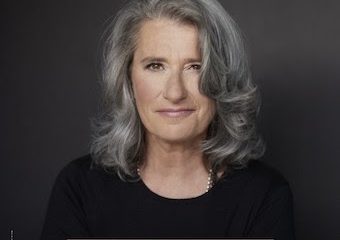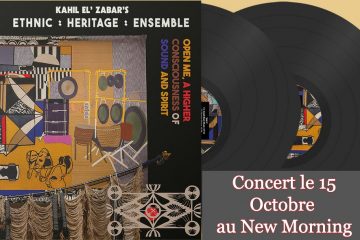Mina Tindle, une voix et une présence douces comme une caresse
Mina Tindle a un voix et une présence qui vous touchent et ne vous quittent plus.
Alors qu’il a plu à verse sur Paris, Mina Tindle ouvre les festivités des « Soirs d’été OUÏ FM » devant une foule timide et trempée.
Ses cheveux attachés et sa robe fleurie nous montre une Mina Tindle féminine, sage et fragile.
Lorsque le son démarre, lentement, comme une balade que nous sommes obligés de faire, sa voix se détache et la mélodie qui l’accompagne arrivent à captiver notre attention.
Dans le public, les gens qui sont venus s’amuser sont un peu absents. Certains regardent Mina Tindle avec
Taranta is Mina Tindle’s debut album. Her name has been whispering through the pop-folk scene like a breath of fresh air for some years now. And a cosmopolitan name it is too (borrowed from Milo Tindle, a character in Joseph Mankiewicz’s 1972 film Sleuth) for a French singer (with Spanish roots) who has electrified anyone lucky enough to see her live or hear her self-produced songs. Now, after the buzz, the breakthrough, with a debut album that delivers on its promises – and much more besides. “It’s all there. It sums up where I’ve got to, but it’s also a new stage on the road.”
But there were other stages before this one of triumph. The first was when, like many music-lovers of her generation (she’s 28), Mina Tindle – who was called Pauline at the time – saw the light in Catpower’s songs a dozen years ago. “When I heard her cover of ‘Satisfaction’ by the Stones, I fell in love with her voice. It knocked me over backwards, but I could identify with it. My first song copied Catpower. I discovered that singing wasn’t that hard – and that it was thrilling. But I already had a special relationship with music before that; my grandfather and my mother were both keen singers. I remember spending summers on my own at my grandparents’ in Spain. I sang as I played and my voice kept me company. But it took me a while to start taking it seriously.”
Second stage: A few years after her first song, the Parisian moved to Brooklyn for a work placement for her final year of studies. She lived upstairs from the Zebulon, a bar that put on three gigs a night. “I lived right above the stage and I didn’t get any sleep for eight months.” It was a wake-up call. She confronted her budding songwriting skills with her music’s American roots, met musicians, played her first gigs and formed a Franco-American band, The Limes, via MySpace. “The environment was good and things started to take shape.” Her profession was becoming clear, and when she had to go back to France, Pauline decided to make a go of it.
Third stage: “I wanted to make a record, but it was more about crafting an object than launching a career.” So she took her time. Back in Paris, she teamed up with the gang at Sauvage Records again (they would later release her first 45), had quite a few joint projects and experiences, played a lot of gigs (with Beirut, Lee Ranaldo and Alela Diane among others) and created a stir in the media. Then, again via MySpace, she met one of her musical idols, whose songs she used to sing when she was small: JP Nataf, former lead singer with The Innocents and one of the great craftsmen of French pop. Mina Tindle wrote to tell him she was longing to hear his second album. The ensuing correspondence proved fruitful and their admiration mutual. JP Nataf fell head over heels in love with Mina Tindle’s voice. He brought her in to sing on his own second album and then produced her debut album. This adventure, too, was a long haul. It took over two years to record Taranta (at Garage studios in Paris). “I didn’t have a ready idea of the record; we tried things out together. I learnt a heck of a lot from JP. He gave me confidence – he’s a perfectionist and a dreamer. He wasn’t in a hurry; we could’ve spent five years on this album. When we were mixing the final track, we found ourselves re-recording the drums at midnight. This album is all about my meeting JP.”
She’s responsible for the intimate, heartfelt songs she sings in a magnificent, magnetic voice that is delicate and sensual, profound and restrained at the same time, as if conjuring up memories of summer nights to make it through the winter. “I sing to cure myself of something,” she says discreetly, and the therapy is contagious. He’s responsible for producing a sound like a rising sun, scattering touching arrangements like intersecting rays and a multitude of subtle but sophisticated details.
Together they have made a debut album that sails off towards unknown horizons like a yacht driven by tropical winds on a quest for moments of voluptuous grace. On an album of inner journeys, we meet some of the great dreamers of modern pop music such as Feist, Catpower, Emily Loizeau, Emiliana Torrini, Regina Spektor and Kate Bush. Mina Tindle isn’t a singer under the influence, more a place of confluence. She sings mainly in English on Taranta, with a little French and even some Spanish. But her album title comes from Italy. “The last few years, I’ve spent my summers in the south, in Puglia. I’ve got a friend who’s really into the traditions – the tarantella, music and dance. There used to be a festival for women, for the mad women of the village, the depressives of the time… I wrote a song about that called Taranta. It isn’t on the album, but I will come back to that song some time. I’m waiting to be able to really bring it to life.” Another stage…
[nggallery id=72]
Taranta est le premier album de Mina Tindle. Depuis quelques années déjà, son nom circulait comme un courant d’air vif dans le monde des chanteuses pop-folk. Un patronyme cosmopolite (emprunté à Milo Tindle, personnage du film Le Limier de Joseph Mankiewicz, 1972) pour une chanteuse française (avec des racines en Espagne) qui a foudroyé tous ceux qui ont la chance de la voir sur scène, ou d’entendre ses chansons autoproduites. Mais après la sensation, l’ascension : ce premier album qui tient toutes les promesses, et plus encore. « Il y a tout dedans, c’est un bilan mais aussi une étape. »
Avant cette étape déjà victorieuse, il y en eut d’autres. Première étape : comme beaucoup de mélo(wo)manes de sa génération (elle a 28 ans), Mina Tindle, qui s’appelait alors Pauline, a vu la lumière il y a une dizaine d’années dans les chansons de Catpower. « Quand j’ai entendu sa reprise du Satisfaction des Stones, je suis tombée folle amoureuse de sa voix, à la fois bouleversante et accessible. Ma première chanson, c’était de la copie de Catpower. J’ai découvert que chanter n’était pas si dur, et que c’était grisant. Avant cela, j’ai quand même eu un rapport particulier à la musique : mon grand-père et ma mère chantaient beaucoup. Je me souviens d’étés passés seule chez mes grands-parents en Espagne. Je jouais en chantant, ma voix me tenait compagnie. Mais j’ai mis du temps à prendre tout ça au sérieux. »
Deuxième étape : quelques années après sa première chanson, la parisienne se pose à Brooklyn, pour un stage de fin d’études. Elle vit au dessus du Zebulon, un bar qui organise trois concerts par soir. « J’habitais au-dessus de la scène, je n’ai pas dormi pendant huit mois ». Elle s’est même éveillée : là-bas, elle confronte ses chansons bourgeonnantes aux racines américaines, rencontre des musiciens, fait ses premiers concerts, monte un groupe franco-américain via Myspace, The Limes. « Il y avait un bon environnement, ça devenait concret ». C’est le métier qui rentre. Et quand elle rentre en France, Pauline a décidé d’en faire un métier.
Troisième étape : « J’ai voulu faire un disque, mais avec une envie d’artisan, pour construire un objet plutôt que projeter une carrière ». Elle va donc prendre son temps. A Paris, elle retrouve sa bande du label Sauvage Records (qui publiera son premier 45 t), multiplie les collaborations, les expériences et les concerts (avec Beirut, Lee Ranaldo, Alela Diane…), affole les médias. Puis il y a la rencontre, via myspace encore, avec un de ses héros musicaux, dont elle chantait les chansons quand elle était petite : JP Nataf, ancien leader des Innocents et grand orfèvre de la pop en France. Mina Tindle lui écrit pour lui dire qu’elle se languit d’entendre son deuxième album. L’échange s’avère constructif, l’admiration réciproque. JP Nataf a le coup de cœur pour la voix de Mina : il va la faire chanter sur son propre deuxième album, et se retrouver réalisateur de son premier album. Une autre aventure au long cours : l’enregistrement de Taranta (au studio Garage à Paris) s’est déroulé sur plus de deux ans. « Je n’avais pas le disque en tête, on a cherché ensemble. J’ai énormément appris avec JP, il m’a donné confiance, c’est un perfectionniste rêveur. Il n’était pas pressé, on aurait pu passer cinq ans sur ce disque. Au moment de mixer le dernier titre, on s’est retrouvés à réenregistrer des batteries à minuit. Ce disque, c’est vraiment ma rencontre avec JP ».
Elle, ce sont des chansons intimes, chantées du fond du cœur et d’une voix magnifique et magnétique, fine et sensuelle, à la fois profonde et retenue, qui semble se souvenir de nuits d’été pour survivre à l’hiver. « Je chante pour me soigner de quelque chose », avoue-t-elle, pudique, et cette thérapie est contagieuse. Lui, c’est une production comme un lever de soleil, des arrangements mouvants, comme des jeux de lumière qui se croisent, une profusion de détails à la fois légers et sophistiqués.
Elle et lui, c’est un premier album comme une échappée belle, un disque-voilier poussé par des vents chauds, qui file vers un horizon inconnu, à la recherche de moments de grâce voluptueuse. Dans ce disque de grands voyages intérieurs, on peut croiser quelques rêveuses de la pop contemporaine : Feist, Catpower, Emily Loizeau, Emiliana Torrini, Regina Spektor, Kate Bush… Mina Tindle n’est pas une chanteuse sous influences, mais plutôt de confluences. Sur Taranta, elle chante beaucoup en anglais, un peu en français, et même en espagnol. Mais le titre de son album vient d’Italie. « Depuis quelques années, je passe tous mes étés dans le Sud, dans les Pouilles. J’y ai une amie qui est passionnée par les traditions, la tarentelle, la musique, la danse. Autrefois, il y avait la fête des femmes, des folles du village, les dépressives de l’époque… Taranta est une chanson que j’ai écrite sur ce sujet. Elle n’est pas sur l’album, mais je reviendrais à cette chanson, je vais attendre pour lui donner une belle vie ». Prochaine étape…






No Comment